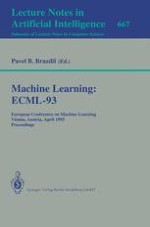This volume contains the proceedings of the Eurpoean Conference on Machine Learning (ECML-93), continuing the tradition of the five earlier EWSLs (European Working Sessions on Learning). The aim of these conferences is to provide a platform for presenting the latest results in the area of machine learning. The ECML-93 programme included invited talks, selected papers, and the presentation of ongoing work in poster sessions. The programme was completed by several workshops on specific topics. The volume contains papers related to all these activities. The first chapter of the proceedings contains two invited papers, one by Ross Quinlan and one by Stephen Muggleton on inductive logic programming. The second chapter contains 18 scientific papers accepted for the main sessions of the conference. The third chapter contains 18 shorter position papers. The final chapter includes three overview papers related to the ECML-93 workshops.
